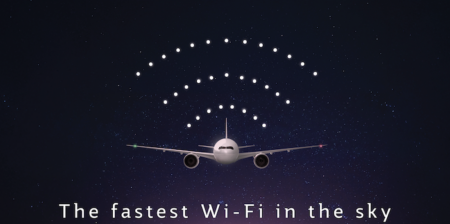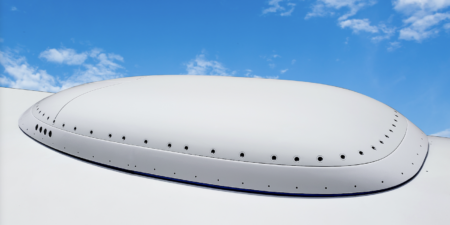Two currently in-orbit satellites comprise the initial FlytLIVE network for the Americas. A third satellite provided by Thales Alenia Space will be launched in 2020 to meet anticipated market growth over the Americas
September 12, 2016 – Following the signing of two agreements with satellite operator SES, Thales can now offer airlines its FlytLIVE inflight connectivity service over the Americas, which will allow passengers to enjoy full internet services, including video streaming, games, social media and live television.
The FlytLIVE service will start operating in mid-2017 using in-orbit satellites. However, to meet the growing connectivity market, SES will procure a new satellite specifically designed for the needs of FlytLIVE and manufactured by Thales Alenia Space, which will be launched in 2020. The satellite’s architecture is based on Thales Alenia Space’s all-electric version of the Spacebus NEO platform, which the parties say is the highest performing satellite in the global connectivity market. The satellite architecture and network have been optimized for the connectivity requirements of commercial aviation, according to Thales.
The FlytLIVE service is enabled by Thales’ end-to-end technologies, including products such as the modular antenna and multi-frequency radome, in-cabin wi-fi and portal platform. The offering also provides bandwidth and session management, content delivery, operational support tools, line maintenance and turnkey service and support with high service level agreements.
How FlytLIVE will be delivered:
FlytLIVE services will use the SES connectivity network of Ka-band High-Throughput Satellite (HTS) services optimized for the best inflight connection speeds. SES will operate the satellites and the ground network, and the services will be ready for airline and passenger use by summer of 2017, provided by two satellites that are currently in orbit.
The third satellite in the network to be launched, SES-17, will be optimized for the fast-moving aviation and mobility market over the Americas. According to Thales, the satellite will provide new Ka-HTS bandwidth over this region to meet current and future speed, coverage and quality expectations of crowded skies and increasing passenger service demands as regional airline passenger traffic is forecasted to nearly double by 2030 according to an IATA report.
The satellite will be equipped with close to 200 spot beams of mixed size for more flexible allocation of capacity over high-traffic airline routes and field-of-view beams to enable the most efficient delivery of Internet, live broadcast television and real-time content delivery.
SES-17 will cover North America, South America, Central America, the Caribbean and the Atlantic ocean. The network will provide substantial gains over today’s broadband connections, ensuring ultra-high speeds, capacity, coverage and quality.
Karim Michel Sabbagh, president & CEO of SES stated, “SES-17 is another keystone in our unique satellite architecture and a major milestone in the execution of our strategy to build a differentiated portfolio of high-throughput systems for very distinct customer needs. The new satellite will further strengthen our network capabilities to deliver unmatched next-generation connectivity services. SES-17 is tailor-made for customers who demand globally flexible, scalable, future-proof and resilient solutions in the aeronautical sector, but also in other demanding data markets.”




